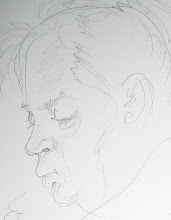The Frightful Tomb
I clambered up the steep and irregular boulder steps to the entrance door high above the desert floor, for 40 centuries, the tallest structure on Earth.
I entered through the Robber’s Tunnel, a hole poked into the side of the massive structure by Persian Invaders around AD820. At that time, the main entrance was located higher up and off centre to dissuade looters, and was concealed behind slabs of polished stone covering the entire edifice.
Expending such a huge effort to rob the place, those early plunderers were sure to have left few treasures for me.
Entering this structure was not for the faint of heart. The limit of 300 daring souls admitted daily was seldom threatened, as most people refused to enter this foreboding place.
Posted signs warned of steep climbs, dark, damp, and narrow passageways, and low ceilings often requiring crawling on hands and knees. It was not at all the place for the claustrophobic, the faint of heart, or the out of shape.
But I saw entry as an opportunity of a lifetime as I enthusiastically made my way to the entrance. The reluctance of most to enter made me even more eager to explore this mysterious place.
The place? The Great Pyramid of Egypt. At 4000 years old, it is the only remaining structure of the original Seven Wonders of the World, and I was about to probe into the bowels of this place where so few humans over those 4000 years had ever been.
The inside is a honeycomb of dark mysterious stone passageways punctuated by steep climbs on inclined ramps and steep staircases and ladders. Some of the narrow passageways have been blocked by massive boulders designed to keep out intruders, or indeed, to keep those lost from escape. If lost, what a fate to be entombed and rot in this sweltering place.
Inside, every word and footstep echoes eerily, ghostlike off the solid stone walls, almost as if those from millenniums past are stalking your every step. Every whisper is amplified a thousand times by the massive stone walls comprised of millions of precision “hand cut” locomotive sized stone blocks pieced together so finely as to defy those who would want to slip an onionskin in the joints.
When you stop to listen, you are deafened by the menacing silence of the place. It seems the spirit of the ancient pharaoh entombed here, and his servants, and the workers sacrificed during construction, remain vigilant custodians tracking every movement of those who would enter this sacred place. When you stop to listen, they also silence their sounds so as to remain hidden from your view.
The trapped perspiration off every sweating visitor and the moisture exhaled through their breathing, and often exhumed as a result of their anxiety, adds to the 85% humidity to bathe each subsequent visitor with the vaporous discards of visitors past.
This build-up of humidity, in addition to being a severe discomfort for those brave enough to enter this tomb, is a giant concern to curators and conservators charged with protecting the treasure. Hence the daily limitation on visitors and recent closures for the installation of modern dehumidifier systems.
And to think this marvel of human ingenuity, unmatched even today, was built 4000 years ago with hand labour, primitive engineering, planning and complex design communicated orally or in ancient hieroglyphics written on papyri or clay tablets in the beginning stages of written language, complicated math and astronomical computations without the use of modern computing tools....a structure virtually impossible to duplicate today even in our advanced computerized and mechanized society.
It’s doubtful that any wonders of modern-day engineering will be around 4000 years into the future.
Who says we’ve come a long way in the last 4000 years in what humans have been able to accomplish.
We think of those ancient civilizations as primitive, but no person living today would be able to duplicate the mental and physical skills of the pyramid builders of that pre-biblical Egyptian society.



No comments:
Post a Comment